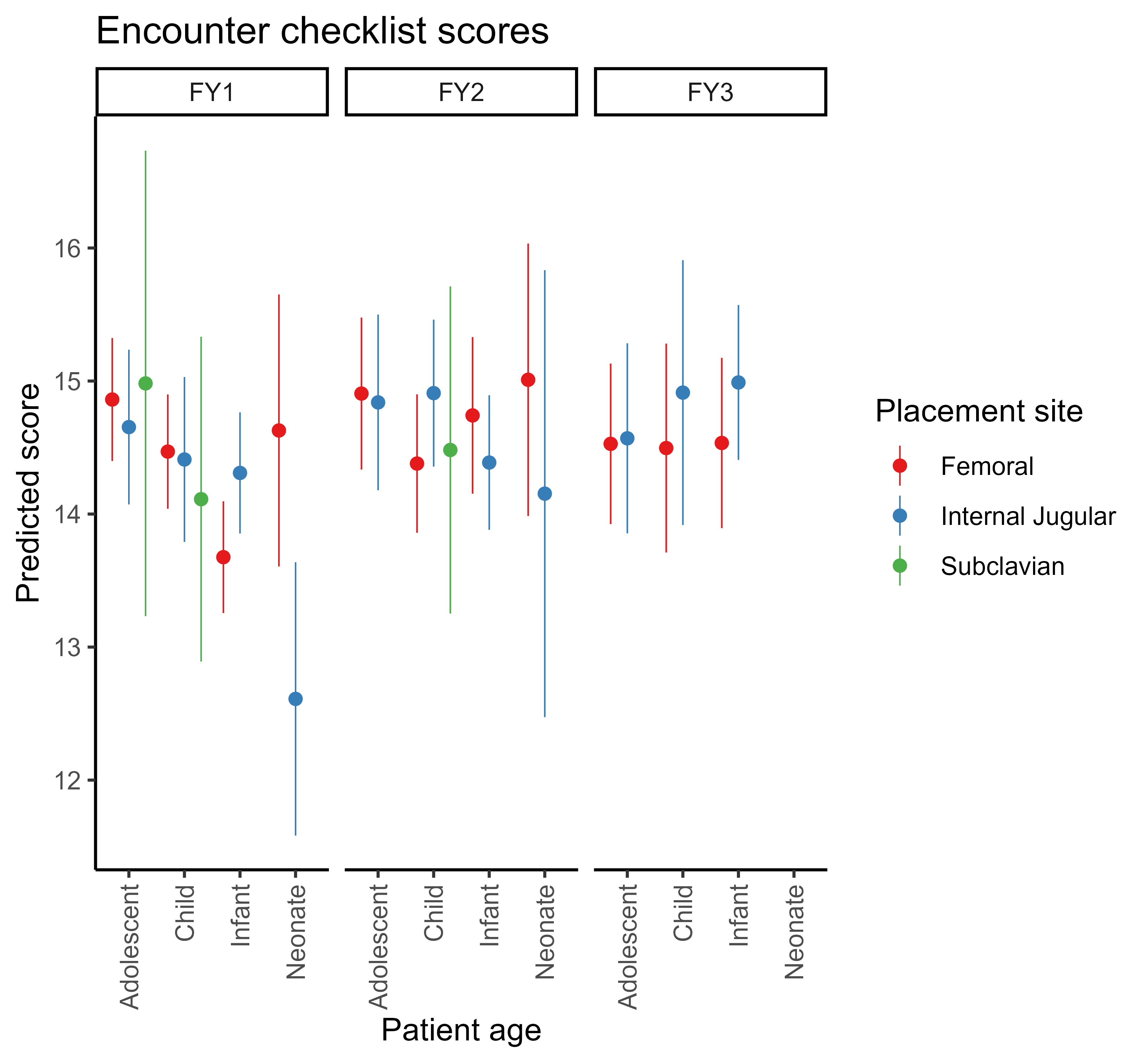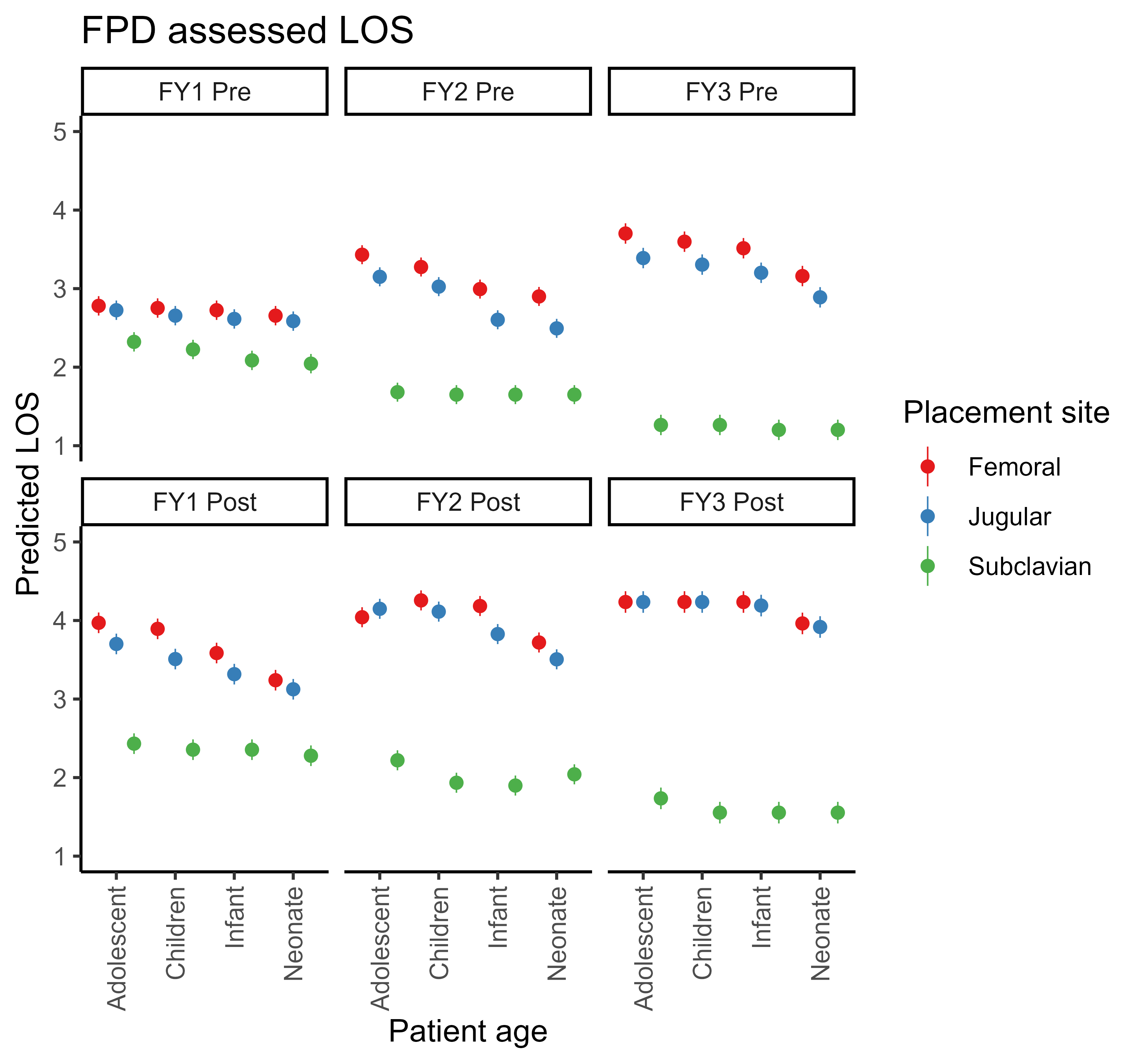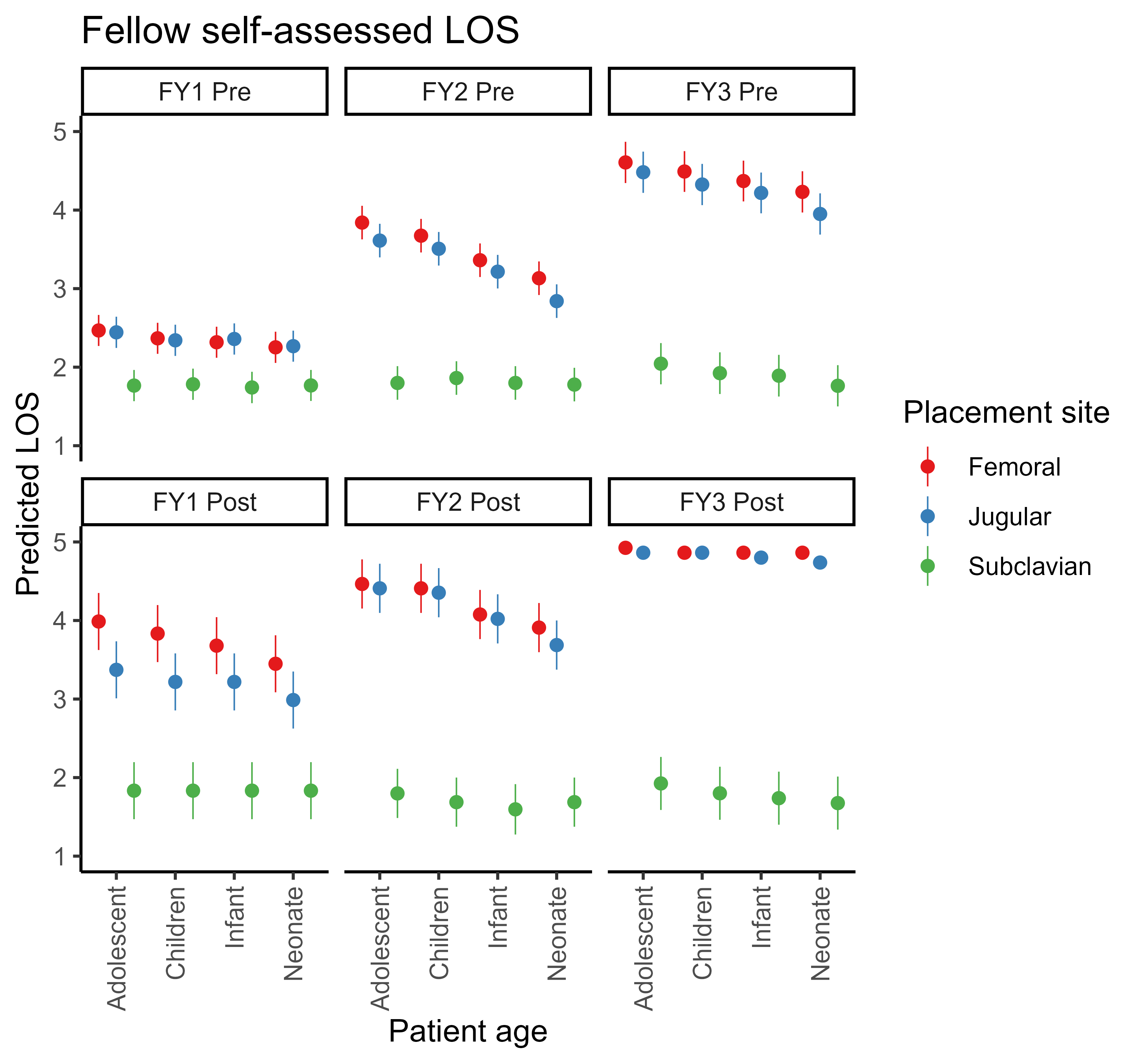Critical Care
Critical Care 1
3 - Central Venous Catheter Placement Among Pediatric Critical Care Medicine Fellows: Does Patient Age or Anatomic Location Matter?
Friday, April 28, 2023
5:15 PM - 7:15 PM ET
Poster Number: 3
Publication Number: 3.107
Publication Number: 3.107
Ryan Good, University of Colorado, Denver, CO, United States; Ben D. Albert, Harvard Medical School, Boston, MA, United States; Alvaro Coronado Munoz, McGovern Medical School at the University of Texas Health Science Center at Houston, Houston, TX, United States; Kim Derespina, Mount Sinai Kravis Children’s Hospital, New York, NY, United States; Jennifer King, Monroe Carell Jr. Children's Hospital at Vanderbilt, Nashville, TN, United States; Amanda Levin, Johns Hopkins, Bethesda, MD, United States; Richard Mink, University of California, Los Angeles David Geffen School of Medicine, Torrance, CA, United States; Jennifer C. Munoz Pareja, University of Miami Leonard M. Miller School of Medicine, Miami, FL, United States; Katie R. Nielsen, University of Washington School of Medicine, Seattle, WA, United States; Tara L. Petersen, Medical College Of Wisconsin/Children’s Wisconsin, Milwaukee, WI, United States; Rachel Poeppelman, University of Minnesota Masonic Children's Hospital, Minneapolis, MN, United States; Samuel Rosenblatt, Children's Hospital of Philadelpha, Philadelphia, PA, United States; Sushant Srinivasan, University of Wisconsin School of Medicine and Public Health, Madison, WI, United States; Hossein Tcharmtchi, Baylor College of Medicine, Houston, TX, United States; David A. Turner, American Board of Pediatrics, Chapel Hill, NC, United States; Allison Whalen, Medical University of South Carolina, Charleston, SC, United States; Jason A. Werner, Saint Louis University School of Medicine, St. Louis, MO, United States; Adrian Zurca, Penn State Children's Hospital, Hershey, PA, United States; Alan Schwartz, University of Illinois at Chicago, Chicago, IL, United States; Donald Boyer, Children's Hospital of Philadelphia, Philadelphia, PA, United States

Ryan Good, MD (he/him/his)
Assistant Professor
University of Colorado
Denver, Colorado, United States
Presenting Author(s)
Background: Pediatric critical care medicine (PCCM) fellows must develop competence in central venous catheter (CVC) placement prior to independent practice. CVC placement is more difficult in patients with smaller vasculature, which may make it more challenging for PCCM fellows to develop competence in younger patients. Anatomic locations for CVC placement include the femoral vein, internal jugular vein, and subclavian vein (SV). Despite a favorable risk/benefit profile, the SV is the least common site for CVC placement in PCCM, which limits opportunities for PCCM fellows to perform the procedure at this location.
Objective: Compare PCCM fellow CVC placement performance based on patient age and anatomic location.
Design/Methods: We conducted a secondary analysis of a prospective, multi-site, observational study conducted over a 12-month study period. We measured PCCM fellow CVC placement performance using a validated task specific checklist (TSC) and a level of supervision (LOS) scale. The TSC consisted of 15 discrete steps with dichotomous (Complete/Not Complete) options. The LOS scale included 5-levels from ‘observe only’ to ‘able to perform procedure unsupervised’. We defined competence as a TSC score of 15 and a LOS score of 5. The supervising clinician completed a TSC and LOS for each CVC placement encounter during the study period. Program Directors (PDs) and fellows completed a survey at the beginning and end of the study period and indicated the LOS required based on patient age and anatomic location. We used linear mixed models with site, age, and fellow year as fixed effect predictors and program and fellow as random effects to adjust for clustering in program, and repeated measures on the same fellow.
Results: 22 sites participated with 211 CVC placement encounters by 99 PCCM fellows. Only five CVCs in the cohort were placed in the SV. Supervisor TSC scores were significantly lower for CVC placement in infants but did not differ significantly by anatomic site (Figure 1). Supervisor LOS did not differ significantly by patient age or anatomic site. PDs reported a significantly lower LOS for infants, neonates, and the SV (Figure 2). Fellows self-reported no difference in LOS based on patient age but a significantly lower LOS for the SV (Figure 3).
Conclusion(s): PCCM fellows performed more poorly during CVC placement on younger/smaller patients. Fellows rarely performed CVC placement in the SV, and both PDs and fellows reported significantly lower LOS scores for the SV. PCCM training programs should consider the impact of patient age and anatomic site on development of competence in CVC placement.



